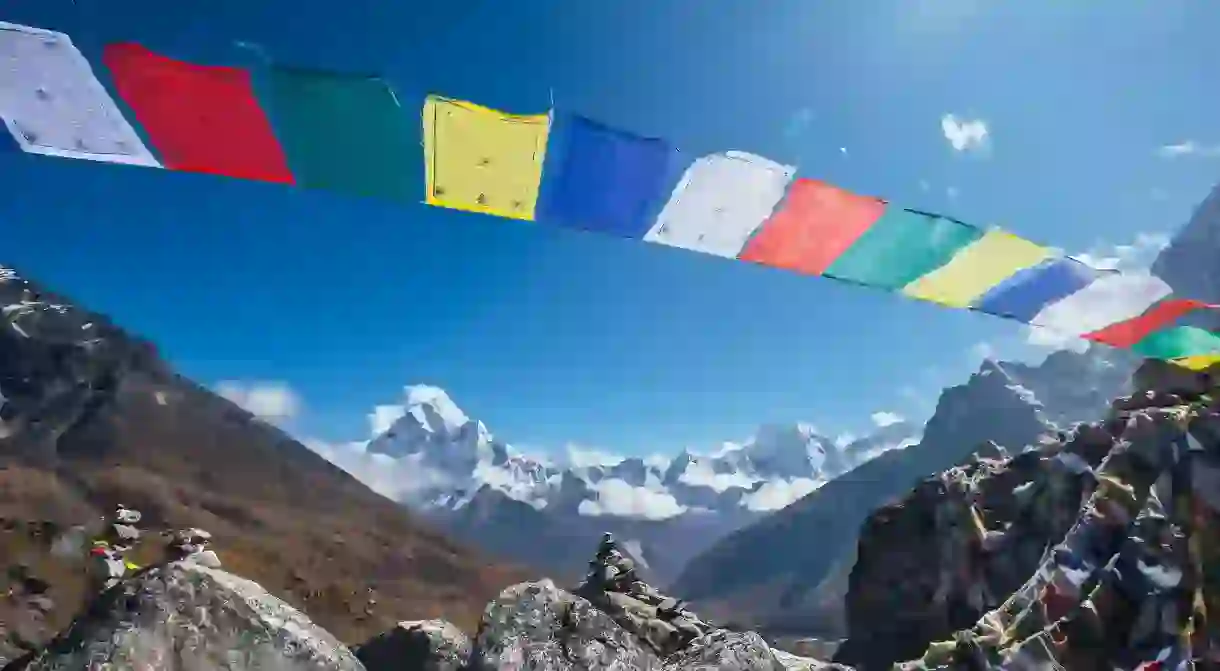Holy Places to Visit in Nepal

As a Hindu-majority country with a significant Buddhist minority, Nepal is home to an abundance of holy temples and other sacred spots – both manmade and natural – which offer a fascinating insight into the country’s religious and cultural heritage, as well as outstanding photo opportunities. Here, we’ve selected the best ones to visit to help you make the most of your trip to Nepal.
Interested in visiting Nepal but not sure where to start with planning your itinerary? Consider joining Culture Trip’s specially curated 11-day Nepal adventure, which includes visits to Kathmandu, Nuwakot, Pokhara and Chitwan National Park, plus several other fantastic destinations.
Boudhanath Stupa

The distinctive white dome and the golden peak of Boudhanath Stupa is the primary holy site for Tibetan Buddhists outside of Tibet itself. It was built in the 14th-century and is one of the biggest stupas in the world. Many Buddhist sites in Tibet are modelled on this extraordinary place. The Boudhanath area is a hub of Tibetan life in Kathmandu and the lanes around the stupa are full of Tibetan trinket shops catering to locals, as well as travellers. It’s auspicious to take a clockwise route around the stupa – known as a kora – and to spin the brass prayer wheels along the way.
Gosainkunda

Located in the Langtang National Park, Lake Gosainkunda is a Hindu pilgrimage spot as well as a popular trekking destination – at 4,380m (14,370ft) above sea level. It remains frozen for about half the year and is an important place for Hindus, as according to Hindu mythology, the gods’ Shiva and Gauri lived here. Thousands of pilgrims flock here during the Gangadashahara and the Janai Purnima festivals. It’s relatively quiet the rest of the time, though. Trekkers are advised to do the Gosainkunda trek after completing the Langtang Valley trek – rather than the other way around – to help with acclimatisation.
Lumbini

Spend any time on the roads of Nepal and you’ll soon learn that “Buddha was born in Nepal.” At least, that’s the slogan emblazoned across every second truck and taxi. Lumbini is a small town in the Western Terai – on the plains bordering India – and according to archaeological evidence, was indeed the place where Buddha was born, in 623BC. Although some sources now suggest he was actually born in 563BC. Today, Lumbini is home to monasteries and Buddhist centres built by various countries with strong Buddhist traditions, so touring the place is like taking a tour of Buddhist architectural traditions from around the world.
Manakamana Temple

The Manakamana Temple is located high on a hill in Gorkha District. Anyone travelling the highway between Kathmandu and Pokhara will have noticed the cable car on the hill – about halfway up – which leads up to the temple. Alternatively, it’s possible to trek the steep route up. Although the temple itself was badly damaged in the 2015 earthquake and is undergoing repairs, Manakamana is still worth a stop. On a clear day, there are good views of the Himalayan mountains. There are lots of places to buy delicious Indian snacks, as it’s a popular pilgrimage place for Indian and Nepali Hindus.
Muktinath Temple

Muktinath – at 3,710m (12,171ft) altitude – is a sacred place to both Hindus and Buddhists, as it’s believed to be a place where liberation from the cycle of birth and rebirth can be found. It’s located at the foot of the Thorung La pass, which must be crossed on the Annapurna Circuit Trek and is a short drive – or a longer hike – from the village of Kagbeni in Lower Mustang. On a clear day, the views of the snowy Himalayas and the dry, rocky landscape of the Mustang are incredible.
Swayambhunath Stupa

Swayambhunath is an ancient Buddhist stupa on a hill overlooking the city of Kathmandu. It can be reached via a steep staircase on the eastern side, or a more gradual road on the west. It’s one of the most iconic sites in the Nepalese capital – with its white dome, ornate bronze spire and intricately painted Buddha eyes. It’s also surrounded by numerous statues, temples and stone Chorten, as well as the numerous creatures that give Swayambhu the nickname of “Monkey Temple”. Although not as large as Boudhanath Stupa, it should still be explored clockwise.
Shri Pashupatinath Temple

Pashupatinath Temple in Kathmandu is often regarded as the most sacred Hindu place in Nepal. It’s located on the banks of the Bagmati River which, despite being sacred itself, is in a deplorably poor condition as it makes its way through the city. Nevertheless, Pashupati is an impressive place to visit and is one of seven Unesco World Heritage Sites in the Kathmandu Valley. It’s where many cremations take place and lots of devout Nepalis come here to die – so make sure to be respectful of grieving families if hanging around or photographing the burning ghats.
Mount Everest

At 8,848m (29,028ft), Mount Everest – the world’s highest mountain, known as Sagarmatha in Nepali or Chomolungma in Sherpa and Tibetan – is sacred to the Sherpa people who inhabit the surrounding regions. Their name for it means “Goddess Mother”. While there are no prohibitions on climbing it – other than the need for an official permit, detailed preparation and the steep costs involved – would-be climbers would do well to remember its sacred status before littering it with garbage.
Did you know – Culture Trip now does bookable, small-group trips? Pick from authentic, immersive Epic Trips, compact and action-packed Mini Trips and sparkling, expansive Sailing Trips.













